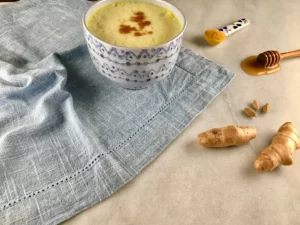Table of Contents
Honey production is a fascinating process carried out by honeybees, who are known for their industriousness and hive structure. In this article, we will explore the intricate steps involved in how bees produce honey and the factors that influence their honey production. From collecting nectar to converting it into honey and storing it in the hive, bees go through a remarkable journey to create this delicious and nutritious substance.
The Role of Female Worker Bees
In a beehive, the task of honey production falls primarily on the female worker bees. These forager bees venture out of the hive in search of flowers and nectar. They utilize their long straw-like tongue, called a proboscis, to suck up nectar droplets from the flowers’ nectaries, which are their special nectar-making organs. Nectar serves as the main ingredient for honey and provides energy for the bees.
The Process of Nectar Conversion
Once a worker bee collects nectar from flowers, it carries it back to the hive in its honey stomach. In the hive, the bee passes the nectar to a younger bee known as a house bee. These house bees take the nectar and store it in hexagon-shaped beeswax honey cells within the hive. They then begin the process of converting the nectar into honey.
To convert the nectar into honey, the house bees dry it out by fanning their wings over the honeycomb cells containing the nectar. This process helps evaporate the excess moisture from the nectar, transforming it into a thicker and more concentrated substance. The bees also secrete an enzyme that breaks down the complex sugars in the nectar into simpler sugars, making the honey less prone to crystallization or solidifying. Once the honey has dried out, the house bees seal the cells with fresh beeswax lids, creating a storage space for the honey.
Factors Affecting Honey Production
Several factors influence the amount of honey a bee colony produces. These factors include the climate, hive ventilation, the number and type of bees in the hive, and external environmental conditions. Bees are highly sensitive to weather conditions such as temperature, wind, rainfall, and humidity, which can affect their behavior and productivity.
Maintaining the ideal internal temperature of the hive is crucial for honey production. Bees regulate the hive temperature by huddling together, sealing cracks in the hive, and generating heat through buzzing. In summer, worker bees help cool the hive by circulating air and bringing water back to evaporate, which aids in temperature reduction. The ability of bees to maintain optimal hive conditions contributes to their honey production.
Quantity of Honey Produced
The amount of honey produced by a bee colony can vary depending on various factors. On average, a single bee produces approximately one-twelfth of a teaspoon of honey in its lifetime. To produce 500 grams (1.1 pounds) of honey, a honeybee colony needs to make approximately two million flower visits. The honey production of a colony is a collective effort, with each bee contributing to the overall honey haul.
Honeybee Anatomy and Honey Production
The anatomy of a honeybee is well-suited for the collection of nectar and the production of honey. Bees have specialized body parts and behaviors that aid in honey production. When a bee collects nectar, the hairs on its body brush against flowers and pick up pollen. As bees fly between plants, they transfer the pollen, aiding in the reproduction of flower species.
Within the hive, bees store honey in cells made of beeswax. As new bee larvae grow in separate brood cells, honey cells are filled with honey in preparation for the arrival of the new bees. When the bee larvae hatch, honeybees feed them with the energy-rich honey they have collected. The honey is mixed with pollen to create “bee bread,” which provides additional nutrients for the growing larvae.
Harvesting Honey and its Impact
Beekeepers play a crucial role in honey production by harvesting honey from artificial hives. However, the impact of honey harvesting on bees, the environment, and honey production itself is a topic of debate. Some beekeepers argue that harvesting excess honey from bees does not significantly harm their welfare, as bees can produce more honey than they need for winter survival.
On the other hand, critics state that harvesting honey can overwork bees, leading them to produce extra volumes of honey to replace what has been taken. Additionally, when bees’ honey is replaced with a sugar alternative, they may not receive the same nutritional benefits as wild honeybees. It is important to consider the potential consequences of honey harvesting on bee populations and their natural environment.
The Importance of Protecting Bees
Bees play a vital role in pollination, which helps plants reproduce and maintain biodiversity. Their foraging activities enable the transfer of pollen between flowers, ensuring the survival and growth of various plant species. Protecting bee populations is crucial for the long-term survival of both plant and insect species.
While the presence of honeybees can increase the number of bees in an area, it can also lead to limited flower resources and competition with native bee species. Each bee species has its preferred flowers, and a balance between honeybees and other bee species is necessary for the overall health of ecosystems.
In conclusion, honey production is a complex and fascinating process carried out by honeybees. From collecting nectar to converting it into honey and storing it in the hive, bees exhibit remarkable behaviors and adaptations. Understanding the intricacies of how bees produce honey can help us appreciate the importance of bees in our ecosystem and the need to protect them for future generations.
Source: https://aboutmanukahoney.com



